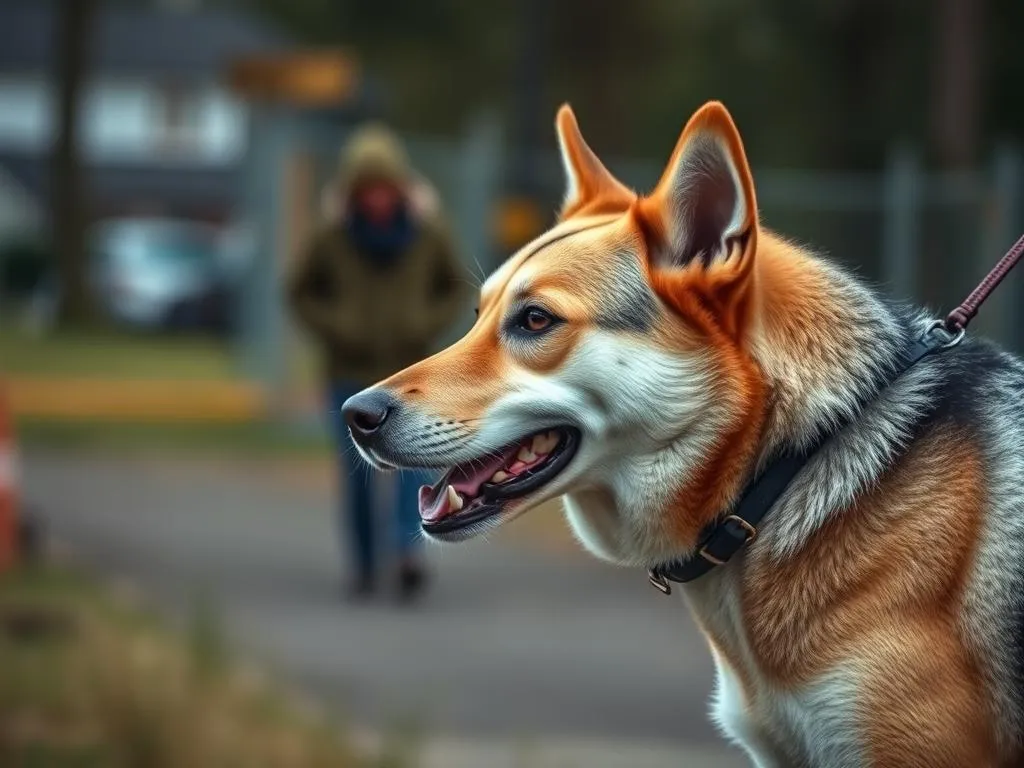
Encountering a loose dog can be a startling experience, especially if you are unsure of how to react. Dogs are naturally curious creatures, and while many are friendly, some may pose a threat. Understanding how to respond appropriately can make a significant difference in ensuring your safety and that of the dog. Statistics indicate that dog bites are a common occurrence, with millions reported each year. Knowing how to handle these situations can help mitigate the risks.
Understanding Dog Behavior
Why Dogs Roam Freely
Dogs may find themselves wandering without a leash for various reasons. Common causes include escaping from their yard, being let out for a bathroom break without supervision, or simply running away due to fear or anxiety. Understanding why dogs roam can provide valuable insight into how to interact with them.
A loose dog may be motivated by curiosity about their surroundings, the desire to play, or even fear if they are startled or lost. Recognizing these motivations can help you assess the situation more effectively.
Signs of a Loose Dog’s Intentions
Being able to read a dog’s body language is crucial in determining its intentions. Here are some signs to look out for:
-
Wagging Tail: A wagging tail can indicate that a dog is friendly, but the speed and height of the wag can provide additional context. A high, fast wag signals excitement, while a low wag may suggest insecurity.
-
Growling: This is a clear warning sign. If a dog is growling, it is best to keep your distance as it may feel threatened or aggressive.
-
Posture: A dog standing tall with its ears perked up may be curious, while a dog crouched low with tucked ears is likely scared. Recognizing these differences can guide your response.
Immediate Actions to Take
Stay Calm and Assess the Situation
The first step when approached by a loose dog is to remain calm. Your body language can influence the dog’s behavior significantly. Take a moment to assess the dog’s demeanor and the environment around you. Are there other people or animals nearby? Is the dog alone? Understanding these factors can help you make informed decisions.
Avoid Direct Eye Contact
When a dog feels threatened, it may interpret direct eye contact as a challenge. Instead, look at the dog’s body rather than its eyes. Position yourself sideways rather than facing the dog directly, which can appear less confrontational and help to ease its anxiety.
Do Not Run Away
One of the most important things to remember is to not run away. Dogs have a strong prey drive, and running can trigger a chase instinct. Instead, maintain your ground and stand still or back away slowly, keeping the dog in your peripheral vision. This signals that you are not a threat.
Responding to a Loose Dog
If the Dog Appears Friendly
If the dog seems friendly and is approaching with a wagging tail, here are steps you can take:
-
Let the Dog Approach You: Allow the dog to come to you on its terms. Sudden movements can startle it.
-
Use Calm Verbal Cues: Speak in a soft and calm voice to reassure the dog.
-
Let the Dog Sniff: Dogs explore their world through scent. Allowing the dog to sniff your hand can help it become comfortable with you before you attempt to pet it.
If the Dog Appears Aggressive
If you sense that the dog is aggressive, it’s essential to act differently:
-
Create a Barrier: If available, use an object like a bag, jacket, or even a stick to create a barrier between you and the dog.
-
Back Away Slowly: Do not turn your back on the dog. Instead, back away slowly while keeping your eyes on the dog. This reduces the risk of provoking it.
-
Stay Quiet: Avoid shouting or making sudden movements that could further agitate the dog.
Seeking Help
If the situation escalates or you feel threatened, do not hesitate to seek help. Look for nearby people who may assist you, or call animal control or local authorities. Be specific about your location and the nature of the encounter to get the best response.
Strategies for Prevention
Training Your Own Dog
If you own a dog, proper training and socialization are key in reducing the likelihood of encounters with loose dogs. Socializing your dog with various environments and other dogs can help them react appropriately if they encounter a loose dog in the future.
Consider enrolling your dog in obedience classes where they can learn commands that enhance their behavior in different situations.
Educating Others
Educating friends, family, and community members about the importance of keeping dogs secure can help minimize the risk of loose dogs. Sharing knowledge on responsible pet ownership can lead to a safer environment for everyone—both dogs and humans alike.
What to Do After the Encounter
Assessing Any Potential Injuries
If you find yourself bitten or scratched, it’s crucial to assess the situation immediately. Clean any wounds with soap and water right away, and seek medical attention if necessary. Document the incident by taking photographs of any injuries and noting the dog’s description and the circumstances of the encounter.
Reporting the Incident
If the loose dog poses a threat or has attacked, it’s vital to report the incident to the appropriate authorities. Provide as much detail as possible, including the dog’s appearance, location, and behavior. This helps authorities address the issue and prevent future encounters.
Emotional Aftermath
Encounters with loose dogs can be frightening and may lead to fear or anxiety about dogs in general. It’s essential to address these feelings. Take time to process the experience, talk about it with friends or family, and consider gradual exposure to dogs in a controlled environment to rebuild your confidence.
Conclusion
Understanding what to do when approached by a loose dog can significantly impact your safety and the well-being of the dog. By remaining calm, reading the dog’s body language, and knowing how to respond appropriately, you can navigate these situations more effectively.
Awareness and education are key in preventing loose dog encounters and ensuring a harmonious environment for both pets and people. Sharing this knowledge can help foster a community that values responsible pet ownership and keeps both animals and humans safe.
By being informed and prepared, you can transform potentially dangerous situations into opportunities for safe interaction and learning.









